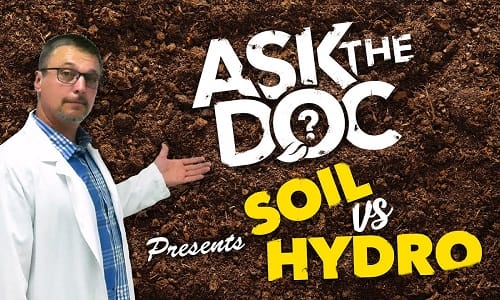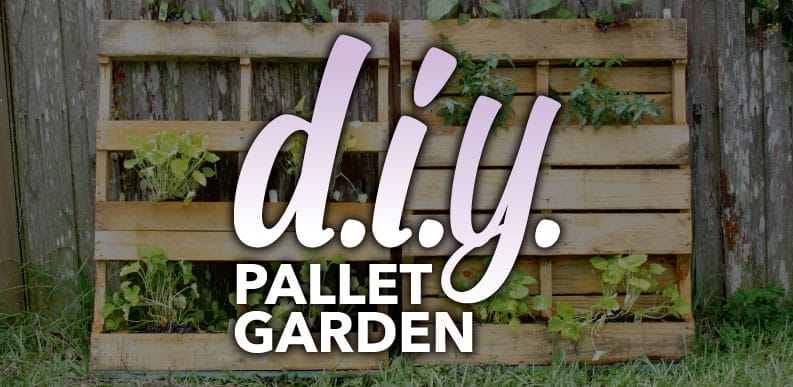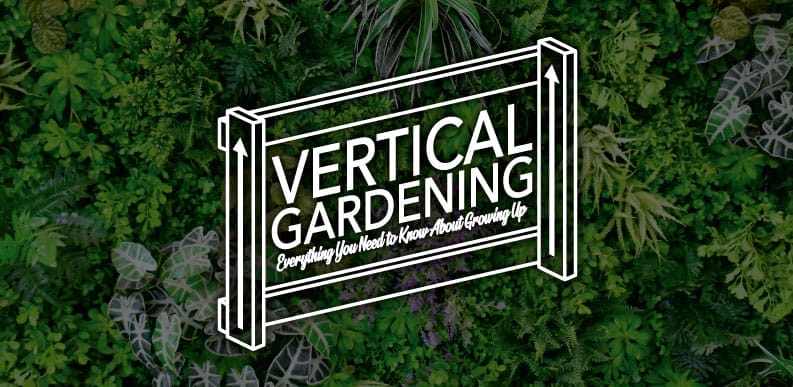This is part of a series being written for HTGSupply by Plant Biologist Dr. E.R. Myers. Please let us know what you think of these articles. Your feedback would be greatly appreciated.
Soil Basics
TOPICS:
1. What is soil made of
2. How to test your soil
3. Soil amendment (How to improve your soil)
4. Nutrients and your soil
5. Pesticides and soil
Indoor growing has a lot of advantages: plants are pampered with maximum light optimal
temperature and nutrients. Indoor growers have close interaction with their plants which can
allow for improved breeding of plants, and it’s a fun hobby. If you love growing you should take
advantage of the summer sun and warmth. Growing plants outdoors gives you more space so
plants can get bigger and you can grow more of them. Even if your indoor hobby does not
involve plants that you may not be able to grow outdoors in most areas of the country (like most
orchids or African violets) you can try to expand your green thumb and grow some other plants
or grow fruits and vegetables to help with the world’s food shortage and improve your health.
Smart growers start plants indoors and harden them off before putting them outside in the
garden (See my Start seeds indoors article). While your seedlings are growing indoors take a
look at your soil. We all love what’s above the soil but it is what’s in the soil that makes good
growers. Soil is a mixture of organic and inorganic particles. Soil and the biological interactions
that take place in soil are very complex. However, if you understand a few basics you can go a
long way to improving your plant growth and overall yields. Soils are highly variable, this means
you shouldn’t just take general advice for your growing area. To accurately assess your soil
conditions, you will need to test the specific area you wish to grow in.
What is Soil?
The small parts of soil are made up of three basic components (particles), sand, silt
and clay. Sand is in fact the largest particle; it is spherical and cuboidal in shape with a diameter
of 2mm – 0.05mm. Silt is 0.002mm – 0.05mm and is spherical or cuboidal. Clay is any particle
less than 0.002mm that is wafer like in shape. Soils high in sand are easy to work (dig in) and
have good drainage, but have low water and nutrient holding ability. Clay soils hold nutrients
and water very well, but generally have poor drainage. Clay is made up of very small particles so
water does not drain well between the micropores. A soil described as a loam is a combination of
any two particle sizes with desirable attributes of both. Some soils on wetlands or areas that
formerly were wetlands can have an organic matter content that is higher than 20%. These soils
would then also have organic matter as a major component. Soils made up of mostly of either
sand silt or clay are mineral soils, those with lots of organic matter (more than 20%) are
histosols.
Test Your Soil
The first way to test you soil is to dig in it, if the soil clings to the shovel or is
generally hard to dig in, you have a lot of clay. If the soil is easy to dig and is crumbly you have
a lot of sand. If you are digging in virgin soil, dig a hole about 30 cm (1 ft). Is there water in the
hole? Only wetland plants will grow here. Is the soil damp with a smell of rotten eggs, or a
stink? This is a wetland soil and is most likely not suitable for a garden.
As you dig the hole you should notice changes in the digging. You should take note of the
layers of soil. On the top of most soils there is usually organic matter, (OM) broken down leaves
and plants. This OM incorporates into the first soil layer, termed the topsoil layer, which is
usually dark due to lots of organic matter. This topsoil is where organic mater and minerals are
mixing, and where most of the soil biology takes place. Some clay soils are dark almost black
but they are not topsoil. If you don’t have a thick topsoil, you can supplement your garden (SEE
BELOW) If you are lucky there will be a large area of darker soil before you get to a second soil
layer, if so you have little work to do. Keep digging and you will run into a sand or clay layer. Clay forms in more southern areas of the USA where the soils are older. (Where there were no glaciers to scrape away the soil). You can get sandy soils in southern areas too due to past wind or water deposition.
To test your soil more precisely you only need a clean glass jar with a lid. Get some soil from
your garden and fill the jar 1/3 full. Next, fill the jar about 2/3rds with water and then add one
drop of dish soap. Put the lid on tight and shake well. The soil particles will be suspended in the
water when you shake and will settle out according to size after shaking. Sand will be on the
bottom, then silt then clay on top. Let the jar sit for 24 hours. After 24 hours, look at the water. Is
it dark like tea with lots of stuff floating? If yes you have lots of organic matter (that is good).
Clear water can mean low organic matter and low nutrients.
Do not remix the soil, to determine the percentage of sand silt and clay, carefully measure the
total height of the soil column (Not the water just the soil). Next, look to see if there are different
colors or layers. Measure each color/layer. Divide each layer by the measurement of the total soil
height (the layer height divided by the total height) which tells you the percentage of each soil
particle. Sand will be the bottom layer, silt the next and clay on top. If you only have two layers,
you could tell by digging in the soil if it is mostly sand or clay or you can test the soil with your
hands. Grab a handful of soil and squeeze it. Does it feel sticky and hold its shape? If yes you
have high clay. Does it feel rough and not hold its shape? If yes you have high sand content.
Does the soil feel light, have chunks in it and partially hold its shape? If yes you have a lot of
organic matter.
Soil Amendment (How to improve the soil)
Good soil is full of life, not just the plant roots but billions of microorganisms that together are called the soil food web. Have you ever heard, “Feed the soil, feed the plants” well you are in fact feeding the soil food web which the plants are a part of. What do you feed the soil food web? Organic matter, dead plants mostly, which is what compost is. (Look for compost information next month – June, 08) Compost is nature’s way of recycling. It is plant mater that is partially decomposed. It improves soil texture (how air and water move thought the soil) adds nutrients, changes the soil chemistry in a way that is beneficial to growing plants, and provides food for organisms in the soil that also benefit plants with their interaction. If you have a complex well fed soil food web your plants will need less water, less nutrients and be less susceptible to pests.
To supplement nutrients and improve the soil in most any area you can add, potting soil, compost, peat moss, worm castings, cured manure, etc. These will add either nutrients and/or organic matter to your soil. For a clay soil you want to increase drainage and soil structure you can add compost, play sand, gravel, perilite, vermiculite etc. in any number of combinations (Please see our Soil/Grow Medium section of our website for products to help your soil structure. Growing in a raised bed or mound will also help plants grow in clay soils. Also, with clay soils, be sure to mix the soil well before you plant to help break up (aerate) the small clay particles If you have high amounts of sand in your garden area, add compost, and/or potting soil and/or consider using drought tolerant plants. Putting mulch around the base of you plants will help sandy soils stay moist. Sand soils may benefit by adding water retaining supplements or gels (like Soil Moist available on our website).
Soil structure – arrangement of soil particles into cluster or aggregates which determines aeration, water movement, heat transfer, root growth and other factors involved with plant growth. Movement of air and water through the soil regulate the growth and type of plants that are able to live there. You want to have a combination of large pores with sand or perilite or even small gravel, and small pores with clay and other minerals.
Compost is partially decomposed organic matter which will have large and small pores which
is why it is good to have in your soil whether you want increased aeration or water holding.
Nutrients: Mixing in compost or manure with your soil should provide enough nutrients to most
plants. If you want, you can test for the availability of nutrients. Soil test kits are available for
about $20 at most lawn and garden stores. Please let us know if you are interested in us carrying
these test kits. If you are going to supplement your soil with nutrients your first choice should be
organic fertilizers such as manure, bat and bird guano, earth worm castings, kelp extract etc. Please see our website these products. The petrochemical fertilizers work too but too much can be toxic to the soil food web and plants. (The July newsletter will discuss nutrients)
Pesticides
A potential downside to outdoor growing is that your plants are susceptible to insect
pests. However, unlike when growing indoors, where a pest infestation can end up killing all
your plants, if too many pests attack your plant, usually something will come along and eat them.
You can try to manually remove pests as a first option. If there is a bad infestation keep in mind
most pesticides are not good for the health of the soil. Some can be downright nasty. They kill
the good organisms just as well as the bad one’s. The beneficial bacterial and fungus in the soil
greatly outnumber the pathogenic one’s (disease causing). Spraying insecticides herbicides etc
should be a last resort especially if you are going to consume all or part of your plants. Keep in
mind that if you are consuming what you grow there can be residual effects of using pesticides.
All the pesticides sold on our website are natural or organic and should be safe for use and
consumption, but please check the bottle for all information regarding these products before
using. If the infestation is not going to kill the plant you are going to consume, then perhaps you
could just let the bugs have a bit of your plants too.
As I mentioned, soil is complex. The information in this newsletter is just the very basics to
help you be a better grower. For more information you could look at the soil survey for your
county online. Soil Surveys are a summary, by county, of different soil types (called “series”)
found in that county and suggest what a given soil can be used for.
You can find soil surveys and more information about your soil at:
http://websoilsurvey.nrcs.usda.gov/app/
Good Growing,
Dr. E.R.Myers


